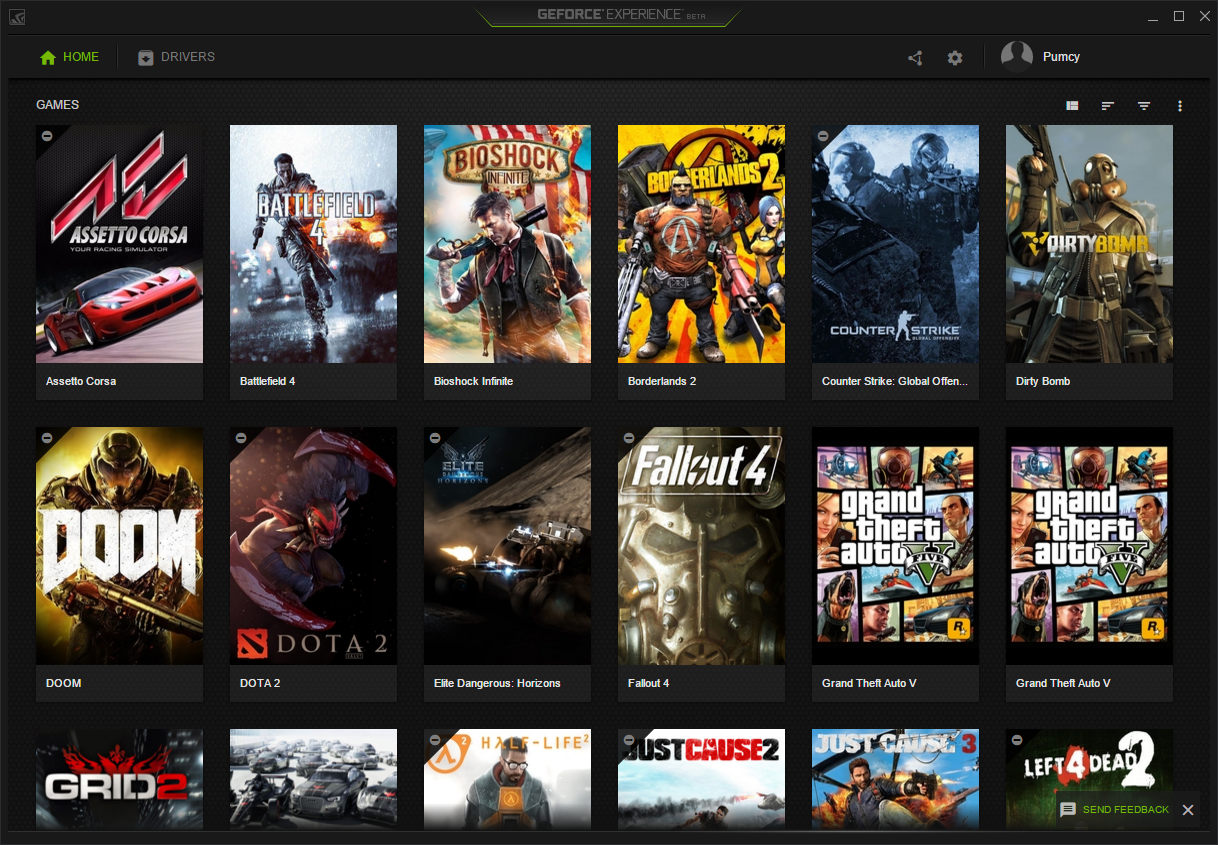Nvidia’s GeForce Experience Beta Gets Significant UI Overhaul, Now Requires Login
Nvidia released a new beta version of the company’s GPU companion application, GeForce Experience. The new version has received a dramatic visual overhaul that makes navigating the software a little bit easier.
GeForce Experience isn’t new, Nvidia first revealed the cloud-based optimization software for game settings in April 2012, and it launched the first beta that following summer. The software has been updated various times throughout its life as Nvidia added features such as ShadowPlay, direct integration into game streaming services such as Twitch and YouTube Gaming, as well as Co-operative Gamestream (which lets you play local multiplayer games with friends over the internet).
In its four-year existence, Nvidia has never really changed the GeForce Experience user interface. The software has evolved to adapt to the new features, but the core appearance and the way you navigate the software has always been the same. Until now.
Nvidia released a beta version of the GeForce Experience software today that changes the look and feel of the application and makes it more of a visual UI, as opposed to text-based. The traditional GeForce Experience layout features a list of pages at the top, including Games, Drivers, My Rig, Shield, and Preferences. The left-hand side of the Games page features a list of all of the games that you own. As you select each game the details of its current and optimal settings, and an example of the visual quality of the game with the current settings, is visible. The UI of the beta version is simplified and easier to navigate.
The Home pane features box art images of all of the games that you have installed on your computer. When you hover over each image, buttons to launch the game and see the current setting details appear. The details page is similar to the previous iteration. The only real change is that the preview image is now above the settings. In the older version, the image was below.
You will also find a Drivers tab next to the Home tab. The drivers page is setup similar to the GeForce.com webpage. It is more of an advertisement and news page than it is a driver details page. One of the driver links within that page is indeed the drivers detail page, and it definitely goes into detail. Not only does it tell you the version of the driver you are running, it also displays details about the GPUs that Nvidia designed that particular driver for, and which games it is “Game Ready” for.
You’ll find the setting page and the shared overlay button on the upper right side of the top pane. Nvidia consolidated several of the options that had their own tabs in the older version of the settings page. Here you’ll find general details about GeForce Experience and your computer hardware. This screen is where you will find the toggle that enables sharing and the check boxes that enable the beta driver, as well as GeForce Experience updates. The settings page is also where you manage your Shield device streaming access (if you have a Shield), as well as which folders GeForce Experience should search for supported games.
Get Tom's Hardware's best news and in-depth reviews, straight to your inbox.
You’ll also notice that there is an account tab inside the settings page, as well as a user account button on the main GeForce Experience window. The new update actually requires you to log in. You have the option to use your Google credentials, which will link your GeForce Experience account to your Google social presence, or you can choose to create a GeForce Experience account. Either way, you will have to log in before you can use the software. The account creation process actually happens the first time you launch the app after the update, and there doesn’t appear to be a way around it.
The update to GeForce Experience is easy to navigate and is definitely a visual improvement, but the fact that you have to log in to use the software might rub some people the wrong way. You can still get your drivers anonymously by downloading them directly from the Nvidia’s website, but you’ll miss out on all the performance optimizations and the game streaming features if you don’t use GeForce Experience.
Follow Kevin Carbotte @pumcypuhoy. Follow us on Facebook, Google+, RSS, Twitter and YouTube.
Kevin Carbotte is a contributing writer for Tom's Hardware who primarily covers VR and AR hardware. He has been writing for us for more than four years.




